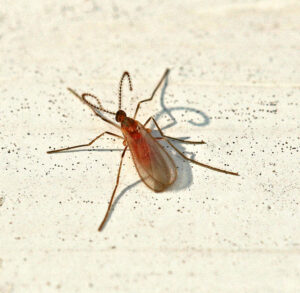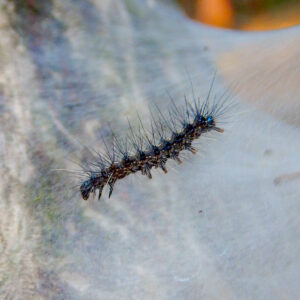Bajra
Bajra is also known as “Pearl Millet”. Bajra is a coarse grain and considered to be poor man’s staple nourishment and suitable to cultivate in dry areas. It is warm and annual plant.
Health Benefits of Bajra –
Some of the health benefits of bajra are as follows-
- Bajra is a very good source of energy.
- Bajra Promotes heart health.
- Bajra helps in reducing body weight.
- Bajra helps in digestion disorder.
- Bajra helps in controlling blood sugar level, hence good for diabetic patient.
Season-
- It is grown during summer season in the month of February-May in parts of Rajasthan, Gujarat and Uttar Pradesh.
- It is also grown as Post Rainy season also known as Rabi season during the month of November- February in Gujarat & Maharashtra.
- In some areas it is also grown as Kharif crop during the month of june-july.
States-
Major Bajra Producing states are Rajasthan (85%) followed by Uttar Pradesh, Gujarat, Haryana & Maharashtra.
Bajra can be grown in variety of soil. However, it thrives best in black cotton soil, sandy loam soil having good drainage. This crop does not prefer acidic & water logging soils. pH of soil should be 6.5 to 7.5.
Field Preparation-
Crop needs very fine tilth because seeds are too small. 2-3 harrowing followed by a ploughing is required to make the soil to the fine tilth. Any weeds should be destroyed during the field preparation to accommodate proper sowing and distribution of seed at an appropriate depth.
Spacing –
- Row spacing of 40-45 cm should be maintained.
- Plant to Plant spacing of 10-12 cm should be maintained.
- Depth should be 2-3 cm
Seed Rate:
- For Dibbling method seed rate should be 3-3.5 kg/hectare
- For Drilling method seed rate should be 4-4.5 kg/hectare
Seed Treatment-
Seed treatment of Agrosan or Thiram can be used @3gm per kg of seeds to avoid seed borne disease.
Bajra grows well in dry & warm climatic conditions and as it is drought-tolerant crop hence, it requires low annual rainfall ranging between 40-50 cm. The ideal temperature for Bajra cultivation is between 20o-30o C.
- It is highly drought-tolerant crop hence, requires less irrigation.
- Water requirement is 300-400mm.
- Irrigation at available soil moisture of 50% is enough.
- Tillering & Flowering are critical stages.
- For Panicle initiation three irrigation is recommended
- Normally 5 irrigations are recommended
- Summer irrigated Pearl Millet requires 6 irrigations for higher yields.
Application of 10-15 tonnes of farm yard manure or compost per hectare is required for Bajra cultivation. 90-100 kg of Nitrogen, 50-60 kg of Phosphorus and 50-50 kg of Potassium is required for Hybrid Bajra.
Fertilizer should be applied in split doses. At the time of sowing, full phosphorous and potash and half of the nitrogen should be added as basal application. 1/4th nitrogen should be added after 30 and 60 days after sowing.
Managing weeds in Bajra fields is essential to ensure optimum growth and yield. Here, are some methods for weed management in Bajra Cultivation.
- Proper land preparation is crucial to minimize weed infestation.
- Maintaining appropriate soil moisture level is essential for crop growth while simultaneously minimizing weed germination.
- Crop Rotation is an effective weed management technique that involves cultivating different crops in sequential years. By introducing, different crop in a rotation cycle, weed species that thrive on Bajra will be disrupted, inhibiting their growth and reducing their population density.
- Applying organic or inorganic mulching materials can be an effective weed management techniques. Mulching helps to suppress weed growth by blocking sunlight, reducing soil moisture loss, and acting as a physical barrier.
- We can also use Atrazine 50% WP as a pre-emergence or post emergence Herbicide it is a broad spectrum herbicide. Spray 500 gm per acre or in 150 Liter of water.
1. Green Ear Disease-
Causal Organism- Sclerospora graminicola
Symptoms- It is a fungal disease. Two stages of the symptoms of the disease have been recorded: The Downy Mildew stage prominent on the leaves and the green ear stage affecting the inflorescence. The inflorescence of infected plants gets completely or partially malformed with florets converted into leafy structure, giving the typical symptom of green ear.
Plants appear sick, pale yellow in colour. Even Young plants show this symptom, Soon the leaves shows chlorosis in streaks on the upper surface while the lower surface shows downy growth of the fungus.
Favorable Conditions-
It’s a seed borne and soil borne disease. Favorable conditions for the growth of fungus is Temperature between 15-25oC and Relative Humidity above 75%.
Management-
- As a preventive method treat the seeds with Thiram @2.5gm/kg of seeds.
- Use Certified and Disease resistance Variety.
- Remove all the infected plants from the field to reduce the spread of fungus.
2. Leaf Blast-
Causal Organism- Pyricularia spp.
Symptoms- It is a fungal disease. Blast symptoms can be observed on the seedling, leaf, peduncle and finger depending on the stage of the crop. The infection appears in the nursery from second week of germination and spread quickly to entire nursery as well as to main field. Young leaves dry completely in the nursery itself. Small brown circles to elongated spots appear on leaves which eventually develop into large elongated spindle shaped areas in the seedling stage. The neck region turns black and shrink.
Favorable Conditions- Favorable conditions for the growth of fungus is Temperature between 25-30oC and Relative Humidity of 90% or above. Heavy dose of Nitrogen, Cloudy days with intermittent rainfall also favors the disease.
Management-
- Grow disease free seeds.
- Treat seeds with Pseudomonas fluorescens @10/kg of seeds.
- Spray Tricylazole @300gm/L of water.
- Foliar spray of Carbendazim+Mancozeb @0.2% concentration at 50% ear head emergence @2GM/L of water.
3. Downy Mildew-
Causal Organism- Sclerospora graminicola
Symptoms-
- Leaf symptoms begins as chlorosis at the base and successfully higher leaves shows progressively greater chlorosis.
- Severely infected plants are generally stunted and do not produce panicles.
- The complete ear can transform to green leafy structure.
Favorable Conditions- Temperature between 15-20oC and Relative Humidity above 85% favors the growth of fungus.
Management-
- Grow Disease Resistant variety
- Infected plants should be removed.
- Spray fungicides such as Metalaxyl+Mancozeb @500gm/200 L of water or Mancozeb @ 2gm/L of water.
4. Ergot-
Causal Organism- Claviceps fusiforms
Symptoms-
- Cream to pink mucilaginous droplets of honeydew ooze out of infected florets on pearl millet panicles.
- Within 10-15 days, the droplets dry and harden dark brown to black sclerotia develop in place of seeds on the panicle.
Favorable Conditions-
- Relative Humidity greater than 80%
- Temperature between 25-30oC during flowering.
Management-
- Spray Fungicides such as Carbendazim @1-2ml/L of water when 5-10% flowers are opened and again after 50% flowering stage.
5. Smut-
Causal Organism- Tolyposporium penicillariae
Symptoms-
- The disease appear only at the time of grain setting.
- The smutted grains scattered randomly in the ear head.
- The affected grains gets converted into gall like bodies which are bigger than normal grains.
- Greenish swollen grains appear in the initial stages.
- The greenish sorus turns to pinkish green and finally turn to dirty black colour.
Favorable Conditions-
- Temperature between 15-25o
- Slightly acidic soil favours the growth of fungus.
Management-
- Use resistant variety
- Use healthy seeds
- Avoid excessive nitrogen fertilization.
- Collect and burn infected plant
- Spray carbendazim @1gm/L of water
1. Nitrogen-
Symptoms- Older leaves become light green and chlorotic at the tip. Leaves die under severe stress. Except for young leaves which are greener, deficient leaves are narrow, short, erect and lemon yellowish.
The entire field may appear yellowish and stunted growth of plants Nitrogen deficiency often occurs at critical growth stages such as tillering and panicle initiation, when the demand for N is large.
Correction Measures- In areas of uncertain rainfall, 50% at sowing and the remaining 50% around 35 days after sowing is recommended. Urea 2% @20gm/L of water foliar spray at 40 and 50 days after sowing increased yield of Bajra.
2. Potassium-
Symptoms- Potassium deficiency symptoms often appear on drought stressed conditions. Dry Weather and its effects on soil properties have contributed to poor potassium uptake by plants.
Deficiency symptoms first appear as pale to lemon-yellow margins on older leaves. Browning followed by necrosis of leaf margins denotes an increase in severity of the deficiency
Correction Measure- Cultivate earlier in the season to avoid damaging plants. Apply Potassium fertilizer @12kg/acre for irrigated crop, should be broadcasted and incorporated before planting or sowing.
3. Phosphorus-
Symptoms –
- Small root systems
- Stunted growth
- Leaf sheaths bend upward with red coloration leaf.
- Leaf appear to be erect and leathery
- Roots turn dark brown purple to black
Control Measures – Foliar spray of 2% DAP @20g/L of water 2-3 sprays at an interval of 15 days.
4. Iron-
Symptoms- Deficiency appears first on younger leaves. New growth is pale yellow.
Control Measures- Foliar spray of CaSO4 @20g/L of water
1. Shoot Fly-
Symptoms – A serious pest on Pearl Millet all over India, during cold weather season, it attacks the crop both in seedlings and boot leaf stage. It causes “Dead Hearts” in young plants and chaffy grains in the mature crop.
Management –
- Use Disease resistant varieties.
- Remove damaged crop from the field
- Spray Dimethoate 30 EC @12ml/L of water
- Use Neem oil 3% @7L/acre
2. Stem Borer-
Symptoms – The central shoot turns brownish and dries out. Although the lower leaves remain green and healthy called as “Dead Hearts”. Bored holes are plugged with excreta. White ear symptom appears during panicle initiation stage, the empty panicles become very conspicuous in a field because they remain straight and whitish.
Management –
- Avoid close planting and continuous water stagnation at early stages. Pull out and destroy the affected tillers.
- Spray any one of the following insecticides- Monocrotophos 36SL @1000ml/ha or Fipronil 5% SC @25-30ml/pump.
3. Gall Midge-
Symptoms – Maggot feeds on developing grains causing grainless glumes with white pupal case attached to the tip of the spikelet.

Management – Spray Malathion 5% DP @12kg/acre or Carbaryl 10 D @12kg/acre.
4. Black Hairy Caterpillar-
Symptoms –
- Larave feeds on the young leaves causes defoliation.
- They feed by scrapping the green matter of the leaf.
- Such leaves gives the appearance of skeleton.
- Finally devour the entire plant leaving the veins

Management – Spray Monocrotphos 36% SL @350-500ml/acre or use Ampligo @80-100ml/acre mixed well with soil.
Harvesting:
The crop is ready for harvesting when the grain become hardy and contain moisture. Two methods can be followed in harvesting. Cutting earhead or cutting of entire plants by stick. Stalk the cut plants for 4-5 days in the sun for drying grains. Grains can be separated by beating the earheads.
Yield:
Rainfed crop yields about 6 to 8 quintals/acre and irrigated crop yields about 12-17quintals/acre.